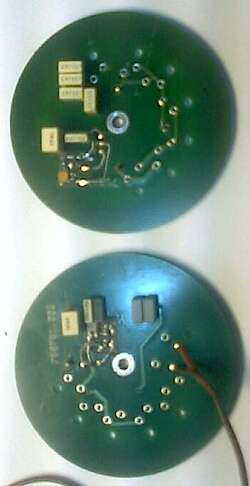

We also prevent a voltage above the supply voltage on any of the signal input pins of the SSM2019. Energy stored in the capacitor is function of voltage squared so just by going from 48V to 15V we lower the stored energy by a factor of 10. Shorting that out accidentally can cause a lot of issues. These specifically deal with the challenges of having a 47-100uF capacitor charged to 48V in a circuit. The guys at That Corp presented two papers at AES entitled “The Phantom Menace” and “The 48V Phantom Menace Returns”. By keeping the phantom power voltage at or less than the supply voltage for the SSM2019, we eliminate a lot of extra circuitry that is needed for protection. Second, and more important to my design is simplicity. First is not needing a separate power supply just for phantom power. If I used the +15V available in my project and the appropriate coupling resistor value, it should work just fine. My epiphany was this: The voltage needs to be high enough for the internal 12V Zener to function. In essence, phantom power is needed to get a certain amount of power to the microphone. Each uses different values of coupling resistors. The phantom power spec for microphones call out 48V, 24V and 12V. You get a nice stable capsule voltage which can be higher than 48V if needed. This is actually the best way to do this. That voltage is used to run the internal electronics and to generate a higher voltage to polarize the capsule. They use a Zener internally to generate 6-12VDC. Currently, most condenser microphones use phantom power to make a stable lower voltage source. This goes way back and was important when the phantom power voltage was used to bias the capsule for condenser microphones. Most people think of 48 Volts as the “standard”. 01%ĭuring my design process, I had an epiphany on phantom power. This keeps the design simple and eliminates the need for challenging to find parts such as antilog potentiometers and multi contact switches with unique resistor values. I used two fixed gain stages with a potentiometer allowing adjustment of the signal between them. The specs on the SSM2019 are fantastic and like most audio operational amplifiers these days, will exceed the rest of the signal chain for performance. I do applaud them for their knowledge sharing and design information. And, the specs are only marginally better than the SSM2019. (See the reference section) Unfortunately, all of their specific preamplifier chips are small surface mount packages. I came across some fantastic information on microphone preamplifier design from That Corp. The SSM2019 is available in an 8 pin DIP package, which means it can be easily bread boarded.

I am very familiar with analog design and had my eye on the SSM2019, having previously used its older cousin, the now obsolete SSM2017. I started studying what was already out there. As good or better than the existing preamps in my Focusrite interface.
Piezo preamplifier analog device ic pro#
It would have pro audio specs: clean, low distortion and low noise.This would be an easy add if the case and power supply were already part of the main project. It would have a high impedance (Hi-Z) input on each channel for piezo transducers, a future project of mine.It would have phantom power to allow me to use all the Pimped Alice microphones I have built.It would be as simple as possible and use a minimum of components.I had a few design goals for this project.

Thus, the SSM2019 Four Channel Mic Preamp was born!

So, I set out to resolve this discrepancy. That was until I built a bunch of microphones. It is a great piece of hardware and met my needs. It has four mic preamps and four-line level inputs along with some digital inputs. Several years ago, I bought a Focusrite USB audio interface. When I needed four more channels of microphone preamplifiers to expand my USB audio interface, I knew it was a DIY project. As you may have noticed from some of my other Instructables, I have a passion for audio.


 0 kommentar(er)
0 kommentar(er)
